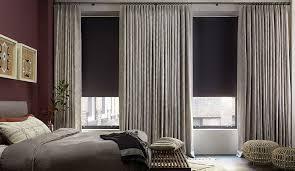Introduction: The Evolving World of Window Treatments
Window treatment solutions are more than just decorative additions — they are vital design elements that shape how a room looks, feels, and functions. From regulating light and temperature to ensuring privacy and energy efficiency, modern window coverings combine aesthetic appeal with practical innovation.
Whether you’re designing a minimalist apartment, a cozy family home, or a contemporary office, choosing the right window treatment can completely redefine your space. Let’s explore the full landscape of window treatment ideas, types, and technologies that bring balance between beauty and performance.
1. Understanding Window Treatment Solutions
The term window treatment solutions encompasses all types of coverings, fixtures, and accessories designed to control light, privacy, and airflow. Broadly, these solutions fall into three categories:
-
Hard treatments: Include blinds, shutters, and shades — typically made from wood, vinyl, aluminum, or composite materials.
-
Soft treatments: Include drapes, curtains, sheers, and valances — made from fabric for a more textured, luxurious feel.
-
Integrated smart solutions: Incorporate automation and motorization technologies for hands-free operation and energy management.
Each category serves unique functional and stylistic purposes, allowing homeowners and designers to create customized looks tailored to their specific needs.
2. Popular Types of Window Treatment Solutions
a. Curtains and Drapes
The classic choice for homes worldwide, curtains and drapes offer endless design flexibility.
-
Curtains are typically lightweight and unlined, ideal for soft light filtering.
-
Drapes, on the other hand, are thicker, often lined, and perfect for privacy and light blocking.
Fabric type, color, and pattern can set the tone for any interior — from linen sheers for a coastal vibe to velvet drapes for a luxurious touch.
b. Blinds
Blinds are among the most versatile window treatments, offering precise control over light and privacy.
Common options include:
-
Venetian blinds – made of horizontal slats that tilt open or closed.
-
Vertical blinds – perfect for large windows or patio doors.
-
Wooden blinds – bring warmth and a natural aesthetic.
-
Aluminum or faux wood blinds – durable and moisture-resistant, ideal for kitchens and bathrooms.
c. Shades
Shades provide a sleek and modern appearance. Unlike blinds, they are made from continuous fabric panels.
Popular styles include:
-
Roller shades – simple and minimal, available in blackout or light-filtering fabrics.
-
Roman shades – soft, cascading folds that add texture.
-
Cellular (honeycomb) shades – energy-efficient with air-trapping pockets for insulation.
-
Solar shades – block UV rays while preserving outdoor views.
d. Shutters
Shutters are both decorative and functional, offering timeless elegance and insulation.
Options like plantation shutters or café-style shutters add architectural depth, making them ideal for traditional or transitional interiors.
3. Smart and Motorized Window Treatments
With the rise of smart home ecosystems, motorized window treatments are becoming a standard in modern design.
Using remote controls, mobile apps, or voice assistants like Alexa or Google Home, users can:
-
Schedule opening/closing times
-
Sync blinds with daylight sensors
-
Enhance energy efficiency by reducing heat gain
Brands like Lutron, Somfy, and Hunter Douglas offer advanced automation solutions for both residential and commercial spaces. Smart window treatments not only elevate comfort but also align with sustainability and convenience trends.
4. Energy Efficiency and Sustainability
Window coverings play a crucial role in reducing energy consumption. According to the U.S. Department of Energy, around 30% of a home’s heating energy is lost through windows.
Choosing the right treatment helps:
-
Reduce heat gain in summer and retain warmth in winter
-
Lower HVAC costs
-
Improve insulation and indoor air comfort
Eco-conscious homeowners now prefer organic fabrics (like bamboo, cotton, or linen) and recyclable materials. Many manufacturers also use low-VOC finishes to support healthier indoor environments.
5. Choosing the Right Window Treatment for Your Space
Selecting the ideal window treatment depends on several key factors:
| Factor | Recommendation |
|---|---|
| Purpose | Privacy → Drapes or blinds; Light control → Shades or shutters |
| Room Type | Bathroom/Kitchen → Faux wood blinds; Bedroom → Blackout curtains |
| Design Style | Minimalist → Roller shades; Traditional → Drapes; Modern → Cellular shades |
| Budget | Blinds and roller shades are budget-friendly; Custom draperies and shutters are premium |
Professional window treatment consultants can also provide measurements, custom fabric samples, and automated system recommendations to ensure a perfect fit.
6. Styling Tips and Design Inspirations
-
Layering Treatments: Combine sheer curtains with roller shades or blinds for flexibility and dimension.
-
Color Psychology: Choose warm tones to create a cozy vibe or cool hues for a calming, modern aesthetic.
-
Hardware Matters: Finials, rods, and tiebacks can dramatically influence the final look.
-
Natural Light Optimization: Use translucent fabrics in living areas to maintain brightness without glare.
7. Maintenance and Longevity
Proper maintenance ensures that window coverings retain their beauty and function:
-
Vacuum or dust blinds weekly to prevent buildup.
-
Machine-wash or dry-clean curtains depending on fabric type.
-
Check motorized mechanisms periodically for smooth operation.
Sustainable fabrics and UV-protected materials also last longer, reducing replacement frequency.
8. Emerging Trends in Window Treatments (2025 and Beyond)
The window treatment industry is rapidly evolving with design and tech innovations.
Key trends include:
-
Smart sensors and AI-driven automation for dynamic light control.
-
Sustainable fabrics made from recycled plastic bottles or hemp.
-
Minimalist aesthetics with hidden tracks and frameless mounts.
-
Biophilic design integration, blending natural materials and light to improve well-being.
Conclusion: Creating the Perfect Balance
Window treatment solutions are more than coverings — they’re an expression of design intent and lifestyle comfort. Whether you opt for timeless curtains, sleek blinds, or automated smart shades, the right choice enhances not just the look of your space but also its energy efficiency and livability.
Investing in well-designed window treatments brings long-term benefits — offering the ideal harmony of privacy, light control, sustainability, and beauty.

